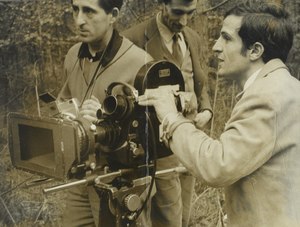
Back Erzählhaltung German Tono (literatura) Spanish Registre littéraire French 말투 (문학) Korean Тон (книжевност) Macedonian Tom (literatura) Portuguese
This article has multiple issues. Please help improve it or discuss these issues on the talk page. (Learn how and when to remove these messages)
|

In literature, the tone of a literary work expresses the writer's attitude toward or feelings about the subject matter and audience.[2][3][4][5][6][7][8][9]
The concept of a work's tone has been argued in the academic context as involving a critique of one's innate emotions: the creator or creators of an artistic piece deliberately push one to rethink the emotional dimensions of one's own life due to the creator or creator's psychological intent, which whoever comes across the piece must then deal with.[1]
As the nature of commercial media and other such artistic expressions have evolved over time, the concept of an artwork's tone requiring analysis has been applied to other actions such as film production. For example, an evaluation of the "French New Wave" occurred during the spring of 1974 in the pages of Film Quarterly, which had studied particular directors such as Jean-Luc Godard and François Truffaut. The journal noted "the passionate concern for the status of... emotional life" that "pervades the films" they'd made. Highlighting those creative figures, Film Quarterly reported that the career path of such a filmmaker "treats intimacy, and its opposite, distance, in a unique way" that "focuses on the dialectic between" those contrasts as "they conjugate each other", and so the directors' social movement "uses intimacy as the dominant feeling-tone of its films" (emphasis added) thus.[1]
- ^ a b c Oxenhandler, Neal (Spring 1974). "The Dialectic of Emotion in New Wave Cinema". Film Quarterly. 27 (3). University of California Press: 10–19. doi:10.2307/1211354. JSTOR 1211354.
- ^ Baldick (2004)
- ^ Beckson & Ganz (1989)
- ^ Brownstein et al. (1992, p. 66)
- ^ Carey & Snodgrass (1999)
- ^ Hacker (1991, p. 51)
- ^ Holman (1975)
- ^ Wendy Scheir (2004). Roadmap To The California High School Exit Exam: English Language Arts. The Princeton Review. p. 56. ISBN 978-0-375-76471-4.
- ^ Turco (1999, p. 11)